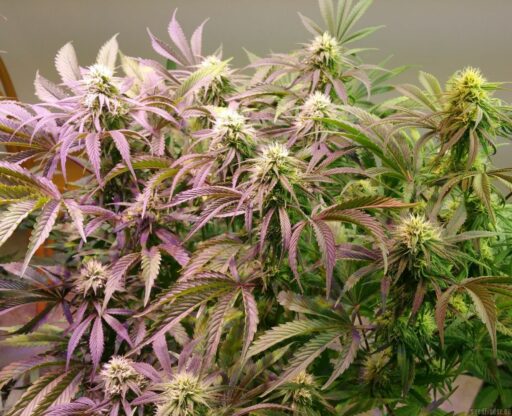As the United States continues to grapple with the evolving legal status of marijuana, it is crucial to understand the current landscape and its implications. With 23 states and the District of Columbia having legalized recreational cannabis, and states like Florida considering legalization, the nation has seen a significant shift in consumption patterns, health considerations, and societal impacts. This article delves into these changes, exploring the legal, health, and social dimensions of marijuana legalization.
Key Takeaways
- 23 states plus the District of Columbia have legalized recreational cannabis, with more states, such as Florida, potentially joining soon.
- Legalization has led to a rise in consumption, with approximately 62 million Americans using cannabis in 2023.
- Modern cannabis strains have significantly increased in potency, presenting new health risks, particularly for adolescents and young adults.
- The societal impact of legalization includes shifts in public perception, economic implications, and changes in crime rates and law enforcement practices.
- Recommendations for responsible use emphasize the importance of understanding potency, consumption methods, and preventive measures for vulnerable populations.
The Current State of Cannabis Legalization
Overview of Legalization Across the States
The landscape of cannabis legalization in the United States has undergone significant changes. Some 23 states and the District of Columbia have legalized recreational cannabis, reflecting a growing acceptance and a shift in public policy. This wave of legalization has not only altered legal frameworks but also consumption habits, with a reported 62 million Americans using cannabis in 2023.
The following table provides a snapshot of the current state of legalization:
| State | Legal Status |
|---|---|
| California | Recreational |
| Colorado | Recreational |
| New York | Recreational |
| … | … |
While the number of states embracing legalization continues to climb, the implications of these changes are multifaceted, affecting everything from health considerations to economic dynamics.
As the debate continues, some senators have taken a bold stance, urging the Biden Administration to swiftly deschedule marijuana from the Controlled Substances Act, highlighting the urgency and the shifting attitudes towards cannabis at the federal level.
Implications of Legalization on Consumption Patterns
The wave of legalization across various states has undeniably altered cannabis consumption patterns. With the introduction of legal markets, consumers now have access to a wider variety of products, including those with higher potency levels. This shift has been accompanied by a surge in the number of Americans partaking in cannabis use, with a reported 62 million in 2023 alone.
The diversification of consumption methods, such as vaping and edibles, has led to an increase in the intake of tetrahydrocannabinol (THC), the active ingredient in cannabis. These methods often result in a more intense experience compared to traditional smoking.
However, the rise in consumption also raises concerns about the potential for increased addiction rates and associated personal and societal costs. It is crucial to monitor these trends and consider the implications for public health and safety.
Pending Legislation and Future Ballots
As the wave of cannabis legalization continues to sweep across the United States, several states are poised to join the ranks of those permitting recreational use. Florida is among the states with pending legislation, with a significant vote scheduled for November. This reflects a broader trend of shifting legislative priorities and public opinion towards cannabis.
-
States with Pending Legislation:
- Florida
- Ohio
- North Carolina
-
Upcoming Ballots:
- November 2024 General Election
The outcomes of these legislative efforts and ballot initiatives will likely have a profound impact on national consumption patterns and the legal landscape. It is crucial for stakeholders to monitor these developments as they unfold.
The momentum behind cannabis legalization shows no signs of abating, and the upcoming ballots could mark a pivotal moment in the ongoing transformation of cannabis policy in the United States.
Health Considerations in the Age of Legal Cannabis

The Surge in Potency of Modern Strains
The cannabis available today is significantly more potent than it was in previous decades. The increase in THC levels has raised concerns about the potential for addiction and other health risks. Modern methods of consumption, such as vaping and edibles, allow for a higher intake of THC compared to traditional smoking methods.
| Year | Average THC Potency (%) |
|---|---|
| 1990s | 4 |
| 2020s | 12 |
The evolution of cannabis strains has led to a landscape where high-potency products are the norm, not the exception. This shift necessitates a reevaluation of consumption habits and the potential impacts on individual and public health.
Certain populations, including veterans, have shown increased rates of cannabis addiction, which may be linked to the stronger strains and the broader acceptance of marijuana use. The implications of these more potent strains on mental and physical health are still being studied, but the trend towards higher THC content is clear.
Mental Health Risks for Adolescents and Young Adults
The legalization of marijuana has raised significant concerns regarding its impact on the mental health of adolescents and young adults. Experts especially worry about the mental health impacts for teenagers, with reports indicating that 17 percent of tenth graders use cannabis, despite its illegality for those under 21.
Adolescents who regularly use cannabis are at a heightened risk for developing a range of mental health issues:
- Increased risk of depression
- Higher rates of suicide
- Greater likelihood of anxiety disorders
- Potential for gastrointestinal problems
Adolescents are 37 percent more likely to develop depression by young adulthood if they regularly use cannabis compared to non-users.
The risk extends to young adults, particularly males, who are the most prone to substance-abuse psychosis—a condition that can lead to delusions, paranoia, and in severe cases, schizophrenia. Regular cannabis use can also exacerbate violence among dating couples and impair cognitive and visual functions, increasing the risk of car accidents among those who drive under the influence.
The Debate Over Cannabis as a Substitute for Opioids
The debate around using cannabis as a substitute for opioids has gained traction, with proponents highlighting the lower risk profile of marijuana. Unlike opioids, cannabis does not pose the same risk of overdose and death. However, experts like Deborah Hasin caution that cannabis is not without its own set of potential consequences to physical and psychological health.
While cannabis may offer a safer alternative to opioids, particularly in managing chronic pain, the rise in cannabis use disorder is a growing concern. Addiction rates are climbing, especially among veterans who may use cannabis to self-medicate.
The increased potency of modern cannabis strains also plays a role in the debate. The products available today are significantly stronger than those of past decades, leading to heightened risks of addiction and other adverse effects. It’s crucial to consider these factors when discussing cannabis as a potential opioid substitute.
The Societal Impact of Legalized Marijuana

Shifts in Public Perception and Cultural Attitudes
The legalization of marijuana has undeniably altered the cultural fabric of society. Changing attitudes and beliefs about cannabis are evident, with a growing acceptance that is reshaping social norms. This shift is not just anecdotal; it is reflected in the data collected from various polls and research studies.
- Public opinion polls consistently show an upward trend in the acceptance of marijuana use.
- The portrayal of cannabis in media and entertainment has evolved, often reflecting a more normalized view.
- Legislative changes have both followed and fueled these cultural shifts, further legitimizing the use of marijuana.
The transformation in public perception is not merely a change in opinion; it represents a deeper cultural evolution that is influencing behaviors, laws, and everyday life.
As society continues to navigate this new terrain, it is crucial to monitor these changes and understand their implications for future policy and social dynamics.
Economic Benefits and Challenges
The legalization of marijuana has brought about significant economic benefits. Job creation is one of the most tangible outcomes, with new opportunities emerging in cultivation, distribution, and retail. Tax revenue generated from cannabis sales has also been substantial, providing much-needed funds for public services and infrastructure.
- Job Creation
- Tax Revenue
- Business Opportunities
- Investment Growth
- Research and Development
While the economic advantages are clear, challenges persist. Regulatory complexities and market saturation can hinder business growth, and there are concerns about the sustainability of the industry’s rapid expansion. > The balance between capitalizing on economic opportunities and addressing potential market pitfalls is crucial for the long-term viability of the legalized cannabis sector.
Legalization’s Effect on Crime Rates and Law Enforcement
The legalization of marijuana has brought significant changes to crime rates and law enforcement activities. The decrease in marijuana-related arrests is one of the most immediate effects of legalization. However, the broader impact on crime rates remains a subject of debate and ongoing research. Some studies suggest that legalization may lead to a reduction in certain types of crime, but the evidence is not yet definitive.
- Marijuana-related arrests have decreased, freeing up law enforcement resources.
- There is a potential correlation between legalization and a reduction in drug-related violence.
- The black market for cannabis persists, albeit reduced, which continues to pose challenges for law enforcement.
The evolving legal landscape requires continuous adaptation from law enforcement agencies to address the shifting dynamics of drug-related crime.
While the long-term effects of legalization on crime rates are still being studied, initial findings indicate that the shift in law enforcement focus could be beneficial for community relations and public safety. The reallocation of resources previously dedicated to enforcing marijuana prohibition allows for a greater emphasis on more serious crimes.
Navigating the Risks: Recommendations for Responsible Use

Understanding the Increased Potency and Consumption Methods
The cannabis market has evolved significantly, with products today being far more potent than those available in previous decades. This increase in potency is not just a matter of stronger strains; it’s also about the diverse and more efficient methods of consumption that are now widespread.
For instance, vaping and the use of edibles are methods that can deliver higher concentrations of THC, the psychoactive component of cannabis, compared to traditional smoking. This shift in consumption methods has implications for both the experience of the user and the potential for overconsumption.
While most users will not encounter severe issues, it’s crucial to acknowledge that cannabis is not a risk-free substance. The potential for addiction and psychological distress is a significant concern, especially among vulnerable groups.
Understanding these changes is essential for consumers to make informed decisions and for policymakers to adapt regulations that ensure safety. Moderation and education are key components in navigating this new landscape of legal cannabis.
Guidelines for Recreational Use Among Adults
With the legalization of marijuana in numerous states, it’s crucial for adults who choose to partake in recreational use to do so responsibly. Moderation is key; as experts suggest, while most users may not experience adverse effects, the potential risks cannot be ignored.
Responsible recreational use involves being aware of the potency of the strains available today, which are significantly stronger than those of past decades. It’s important to start with a low dose, especially for new users, and to understand how your body reacts to cannabis.
Here are some guidelines for responsible adult use:
- Always check the THC content before consumption.
- Avoid driving or operating heavy machinery after use.
- Be mindful of the setting and ensure you’re in a safe environment.
- Consider the impact on your mental and heart health.
- Recognize the signs of overuse and seek help if needed.
Preventive Measures for Vulnerable Populations
In the context of legalized marijuana, special attention must be given to vulnerable populations to mitigate potential risks. For cannabis products, particularly edibles, child-resistant packaging is necessary to prevent children from accessing a product that may lead to unwanted, adverse effects. This preventive measure is crucial in safeguarding against accidental ingestion, which can have serious health implications for the young.
- Educate adults on secure storage practices for cannabis products.
- Implement clear labeling with potency and consumption warnings.
- Establish community programs to raise awareness about the risks of cannabis to children and adolescents.
Responsible use of cannabis not only involves understanding its effects but also ensuring that it does not inadvertently harm those who are most at risk. By taking proactive steps, we can create a safer environment for all.
Conclusion
As we navigate the evolving legal landscape of marijuana legalization, it’s clear that the United States is experiencing a significant shift. With 23 states and the District of Columbia having legalized recreational cannabis, and others poised to follow, there is a growing acceptance of the substance. However, this acceptance comes with a responsibility to understand the potential risks, particularly the stronger strains and their impact on mental and physical health. Experts urge caution, especially for adolescents and veterans, who may be more susceptible to the adverse effects of cannabis use. While the legal status of marijuana continues to change, it is imperative for individuals to stay informed and for policymakers to consider the implications on public health. Ultimately, moderation and education are key in ensuring that the benefits of legalization are not overshadowed by preventable harm.
Frequently Asked Questions
How many states have legalized marijuana for recreational use?
As of the latest information, 23 states and the District of Columbia have legalized recreational cannabis.
What are the mental health risks associated with cannabis use in adolescents?
Adolescents who regularly use cannabis are 37 percent more likely to develop depression by young adulthood, with higher rates of suicide also reported among users.
How has the potency of cannabis changed in recent years?
Modern cannabis strains are much more potent than those from previous decades, with increased levels of the active ingredient, tetrahydrocannabinol (THC).
Are there any concerns about the increased potency of cannabis?
Yes, experts are concerned that the stronger strains and various consumption methods like vaping and edibles may lead to higher intake of THC and increased health risks.
Can cannabis act as a substitute for opioids?
The debate is ongoing, but some individuals, including veterans, may be turning to cannabis as an alternative to opioids for pain relief and to manage psychiatric disorders.
What recommendations do experts have for the responsible use of cannabis?
Experts recommend moderation and caution, especially for people under 25, as the effects of cannabis on the developing brain can be unpredictable and potentially harmful.





